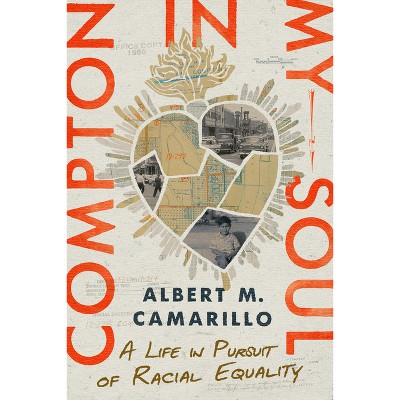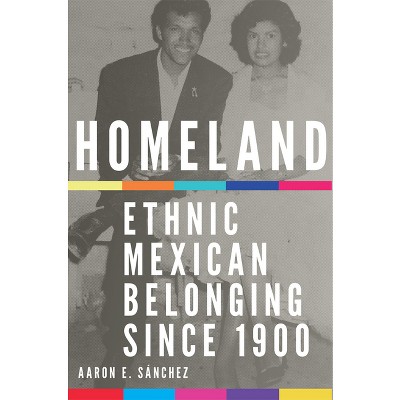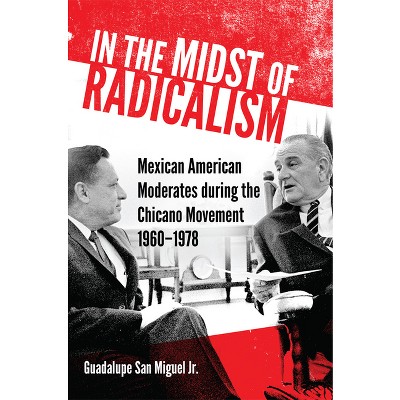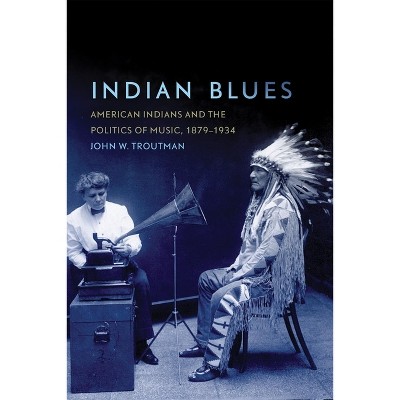Sponsored

Colonizing Ourselves - (New Directions in Tejano History) by José Angel Hernández (Hardcover)
$45.00
In Stock
Eligible for registries and wish lists
Sponsored
About this item
Highlights
- In the late nineteenth century, the Mexican government, seeking to fortify its northern borders and curb migration to the United States, set out to relocate "Mexico-Texano" families, or Tejanos, on Mexican land.
- Author(s): José Angel Hernández
- 278 Pages
- History, United States
- Series Name: New Directions in Tejano History
Description
About the Book
"In the late nineteenth century, the Mexican government, seeking to fortify its northern borders and curb migration to the United States, set out to relocate "Mexico-Texano" families, or Tejanos, on Mexican land. In Colonizing Ourselves, Josâe Angel Hernâandez explores these movements back to Mexico, also known as autocolonization, as distinct in the history of settler colonization. Unlike other settler colonial states that relied heavily on overseas settlers, especially from Europe and Asia, Mexico received less than 1 percent of these nineteenth-century immigrants. This reality, coupled with the growing migration of farmers and laborers northward toward the United States, led ultimately to passage of the 1883 Land and Colonization Law. This legislation offered incentives to any Mexican in the United States willing to resettle in the republic: Tejanos, as well as other Mexican expatriates abroad, were to be granted twice the amount of land for settlement that other immigrants received. The campaign worked: ethnic Mexicans from Texas and the Mexican interior, as well as Indigenous peoples from Mexico, established numerous colonies on the northern frontier. Leading one of the most notable back-to-Mexico movements was Luis Siliceo, a Texan who, with a subsidized newspaper, El Colono, and the backing of Porfirio Dâiaz's administration, secured a contract to resettle Tejano families across several Mexican states. The story of this partnership, which Hernâandez traces from the 1890s through the turn of the century, provides insight into debates about settler colonization in Mexico. Viewed from various global, national, and regional perspectives, it helps to make sense of Mexico's autocolonization policy and its redefinition of Indigenous and settler populations during the nineteenth century"--Book Synopsis
In the late nineteenth century, the Mexican government, seeking to fortify its northern borders and curb migration to the United States, set out to relocate "Mexico-Texano" families, or Tejanos, on Mexican land. In Colonizing Ourselves, José Angel Hernández explores these movements back to Mexico, also known as autocolonization, as distinct in the history of settler colonization. Unlike other settler colonial states that relied heavily on overseas settlers, especially from Europe and Asia, Mexico received less than 1 percent of these nineteenth-century immigrants. This reality, coupled with the growing migration of farmers and laborers northward toward the United States, led ultimately to passage of the 1883 Land and Colonization Law. This legislation offered incentives to any Mexican in the United States willing to resettle in the republic: Tejanos, as well as other Mexican expatriates abroad, were to be granted twice the amount of land for settlement that other immigrants received. The campaign worked: ethnic Mexicans from Texas and the Mexican interior, as well as Indigenous peoples from Mexico, established numerous colonies on the northern frontier. Leading one of the most notable back-to-Mexico movements was Luis Siliceo, a Texan who, with a subsidized newspaper, El Colono, and the backing of Porfirio Díaz's administration, secured a contract to resettle Tejano families across several Mexican states. The story of this partnership, which Hernández traces from the 1890s through the turn of the century, provides insight into debates about settler colonization in Mexico. Viewed from various global, national, and regional perspectives, it helps to make sense of Mexico's autocolonization policy and its redefinition of Indigenous and settler populations during the nineteenth century.Review Quotes
"'Autocolonization' describes the way nation-states--Mexico in this case--used their own indigenous, mestizo, and transnational populations to settle their 'empty lands' in a pattern quite distinct from Anglo-American settler colonialism.In this innovative work, historian José Angel Hernández adds a significant, new theoretical model to the colonial paradigm, one applicable to the Mexican-American borderlands and elsewhere in Latin America."--John R. Chávez, author of Beyond Nations: Evolving Homelands in the North Atlantic World
"In this work of meticulous research and remarkable scholarship focused on Mexican colonization, historian José Angel Hernández addresses one of the most vexing issues facing the modern world: the mass migration of people across national borders. His book encapsulates and gives voice to the experiences of people striving to build a better life."--Miguel Ángel González-Quiroga, author of War and Peace on the Rio Grande Frontier, 1830-1880
Dimensions (Overall): 9.0 Inches (H) x 6.0 Inches (W) x .75 Inches (D)
Weight: 1.27 Pounds
Suggested Age: 22 Years and Up
Series Title: New Directions in Tejano History
Sub-Genre: United States
Genre: History
Number of Pages: 278
Publisher: University of Oklahoma Press
Theme: State & Local, Southwest (AZ, NM, OK, TX)
Format: Hardcover
Author: José Angel Hernández
Language: English
Street Date: October 15, 2024
TCIN: 92531808
UPC: 9780806194592
Item Number (DPCI): 247-39-1003
Origin: Made in the USA or Imported
If the item details aren’t accurate or complete, we want to know about it.
Shipping details
Estimated ship dimensions: 0.75 inches length x 6 inches width x 9 inches height
Estimated ship weight: 1.27 pounds
We regret that this item cannot be shipped to PO Boxes.
This item cannot be shipped to the following locations: American Samoa (see also separate entry under AS), Guam (see also separate entry under GU), Northern Mariana Islands, Puerto Rico (see also separate entry under PR), United States Minor Outlying Islands, Virgin Islands, U.S., APO/FPO
Return details
This item can be returned to any Target store or Target.com.
This item must be returned within 90 days of the date it was purchased in store, shipped, delivered by a Shipt shopper, or made ready for pickup.
See the return policy for complete information.












